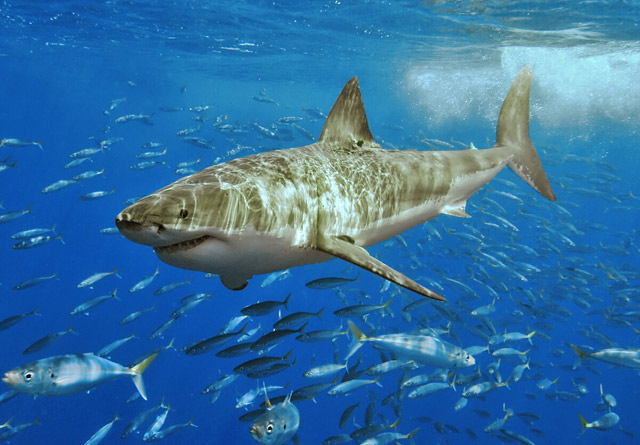Great White Sharks Up For Review as Endangered Species
Become Candidate for Permanent Legal Protection Under California Endangered Species Act

As of March 1, the northeastern Pacific population of great white sharks is up for review by the California Department of Fish and Wildlife to decide whether the animals should be added to the list of species protected under the California Endangered Species Act (CESA). Determined in February to be potentially threatened, the sharks will now be “entitled to the full legal protection afforded to a listed species” while the Fish and Wildlife commission conducts its review.
The specific great white population is most commonly found in waters along the continental shelf from Mazatlan, Mexico, to Oregon, as well as areas near the Hawaiian Islands. Michelle Horeczko — a senior environmental scientist involved in the review — said in an interview that two recent studies estimate a current population of “339 adult and sub-adult sharks,” but she noted, “There are substantive issues with using the estimates from these two studies to estimate the entire population for northeastern Pacific white sharks” since they “do not account for juvenile sharks in the population.” And since historic population numbers for these sharks are unknown, the commission will need to “conduct an in-depth status review” of the sharks’ habits and habitat to determine the future of the population’s candidacy as an endangered species.
To figure out whether the white sharks should remain under the full protections afforded by a CESA listing, Fish and Wildlife will be examining “modification/destruction of habitat, overexploitation, predation by other species, competition from other species, disease, or other natural occurrences,” plus “human activities that may pose a serious threat to the continued existence of this species,” said Horeczko.
Though California law banned target sport and commercial fishing of white sharks in the mid-1990s with only “incidental take and research” exceptions, the review now makes it illegal to hunt, pursue, catch, capture, or kill a great white without the proper permit. Such permits will only be issued on a case-by-case basis during the entirety of the review, which is expected to be completed early next year.


